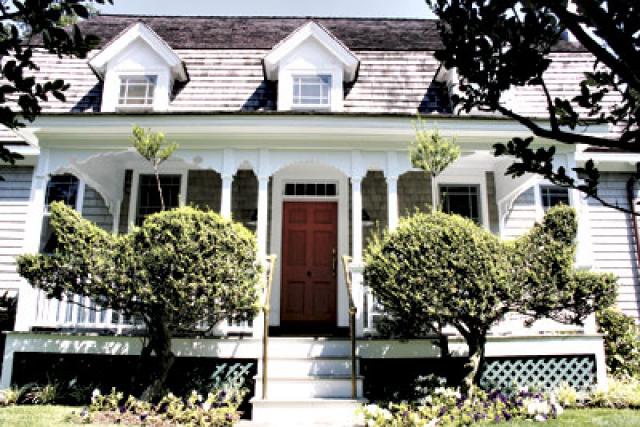Steeped in Sag Harbor History

It’s not every day that a single four-bedroom house will reflect the history of a village, especially not a village with as multifarious a background as Sag Harbor’s.
Yet consider the Hampton Street residence of Carl Hribar and Ki Hackney. For starters, there’s the best-guess date of its construction, 1790, when Sag Harbor was a bustling port and an important New York, well, almost-city.
By 1853, the top of the house was lifted to make room for a second story, an example of how the craftsmen of the time would have their way with a structure, repurposing it rather than tearing it down. (The clue for that date was a newspaper the owners found in a wall upstairs.)
In 1880, the house was moved from its foundation, where Christ Episcopal Church is now, to a lot about a block and a half up the street, across from the Sag Harbor Elementary School. Moving houses, of course, was common here in the 18th and 19th centuries. In this case, it was at the direction of one Capt. Jonas Winters, who lived from 1813 to 1894 and made numerous lucrative whaling trips over the course of two decades. In addition to this house and one on Madison Street, he owned a hat shop in town.
And 1880 is about the time the Victorian flourishes, familiar throughout the village, came in — the elaborate trim adorning the Hampton Street house’s front porch, for example.
Fast forward to roughly 1979, when a young Mr. Hribar and Ms. Hackney bought the house, which at some point in the intervening years had been carved up into a studio and one and two-bedroom apartments. Not only that, sitting at the rear of the lot, which is perhaps a third of an acre, is an entire second house, a three-bedroom ranch, now used on occasion by the couple’s two grown daughters. All of which serves as a nod to the free-for-all that existed before proper zoning.
“This was a welfare house, and the hookers would use that path,” Mr. Hribar said, gesturing out a south-facing window.
“Sag Harbor was just then emerging from the nadir of its existence,” he said, enthusiastically recalling the infamous Black Buoy on Main Street, where to belly up to the bar was to take your life in your hands — if, that is, you weren’t a wharf rat or an off-duty cop.
“Like many Sag Harbor houses, this one has gone through a number of incarnations. It’s not a pure house, and that was the appeal.”
The couple closed on the purchase one April and by that Memorial Day had tenants. They lived in the ranch house out back for a time, and then moved into the main house’s one-bedroom apartment while setting about a renovation that’s been in progress off and on for decades. Major work was completed two years ago, and the owners opened the place up to the public for last summer’s John Jermain Memorial Library house tour.
Mr. Hribar, an architect who works in New York City and on the South Fork, has added his own touches. The foyer, for example, had been closely walled in but is now open to the second-floor ceiling. A nautical motif is pronounced, with rope-shaped wood trim around the doorways and brass handrails along the stairs.
Bead board covers the walls in the foyer — striking because it’s mounted horizontally. “It had been that way,” Mr. Hribar said, and so he kept the look, which is something he strived to do throughout the house, from refusing to move an off-center fireplace in the living room to retaining the original front door and its circa 1910 ringer, which is rung as if winding an alarm clock. In the dining room, which was added in 1910, the new windows are simple, with no mullions, as they had been. Elsewhere, a bedroom door may now be of medium-density fiber construction, but it looks just like the original.
One glimpse into the past can be had in the kitchen, with its ancient rough-hewn beams. They emerge again in the second-floor ceiling, evidence of the roof-raising, with the beams’ hand-pegging visible.
The ceilings upstairs, in fact, presented a problem when Mr. Hribar and Ms. Hackney, a journalist formerly with Women’s Wear Daily and the author of the book “People and Pearls,” moved in. “My wife cried when she saw how low they were” — 7-foot-6. Not only that, “there was a 6-inch difference in the ceiling height upstairs from the front of the house to the back,” Mr. Hribar said.
Leveling floors, taking down one ceiling, raising another, blowing out a couple of walls, it’s the stuff of an old house’s latest incarnation.
